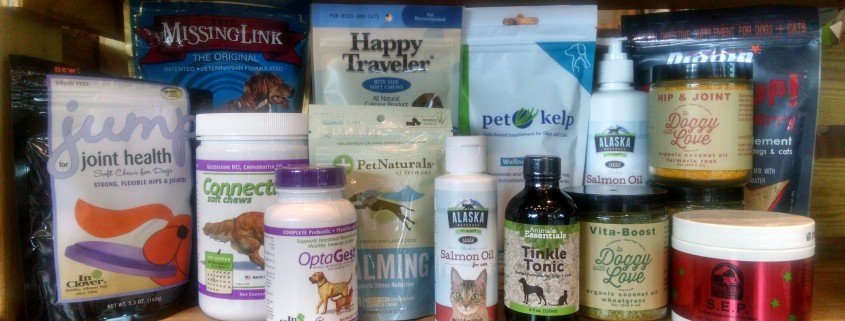Claire Martin, CCMT (that’s Certified Canine Massage Therapist), CVT, shares advice on taking care of senior dogs and how massage can improve their physical and mental state of health. Check out our event calendar for Claire’s massage days at The Happy Beast and read more about her services at Peak Animal Wellness and Massage.
AGE IS NOT A DISEASE.
“Blessed is the person who has earned the love of an old dog.” – Sydney Jeanne Seward
As my practice continues to grow, over 50% of my patients are animals in their golden years. It is with deep gratitude and honor that I work on these animals, and with some amazing results. While almost any dog can benefit from massage therapy, it’s especially true for senior dogs.
Our dogs grow and age similarly to us. The once overly rambunctious and naughty puppy will eventually begin to slow down. Age is not a disease, and it’s really important to remember to embrace this process with an open mind and an open heart. It can be scary when you suddenly realize you are caring for a senior animal, but use this time to empower yourself with the knowledge and understanding of how to prepare for this inevitable, AND wonderful, experience.
Common Conditions in Older Dogs:
Arthritis – Almost every old dog will experience this, no matter what. It’s just a part of the romping and galavanting that goes on in the puppy years. Would we have it any other way!? My arthritic and senior patients who receive regular massage see MAJOR benefits. The list of massage benefits goes on and on, and soon I’ll have a blog on just that! Adding in Omega fatty acids can be incredibly helpful too!
Dental disease – Dental disease can depend greatly on the breed and size of your pup, but no matter what, it’s really important to address. Dogs are absolutely incredible at hiding pain, and so you may never know this is going on without a thorough oral exam by a veterinarian. Once this is taken care of, your senior dog can munch down — and pain free!
Kidney disease – Pay attention to water intake, change in eating, or bowel habits.
Cancer – Sadly, many of our older dogs suffer from cancer. My best advice, if available, is to create a team for your animal. If there’s an integrative veterinarian near you, this is optimal. Continue feeding your senior pup a high quality diet, and continue letting them do the activities that they love!
Depression – This is a really important piece that I don’t want to skip. Older dogs really can feel a sense of sadness, as they are not physically and mentally able to what they did when they were younger. Massage therapy is a blood-pumping activity that can feel similar to exercise, and can act as a tremendous emotional support as well.
How Can You Help?
Movement – Sometimes we want to protect our senior dogs so much, that we forget that they still need to be dogs! Controlled exercise (multiple, short, leash walks) can be emotionally supportive and also good on overall joint health and flexibility.
Fish Oils – Fish Oils act as a natural anti-inflammatory and help lubricate the joints. If your senior dog (or any dog!) isn’t on these yet, it’s definitely something to consider.
Body Work – Consider massage therapy, for all of the benefits – the physical and emotional benefits, and the detoxifying qualities as well.
Emotional Support – Remember your old pup is still a dog! This is really important for BOTH of you. Be there during the process . . . I know it can be hard.
Here’s the truth:
If you’re really super lucky, your dog will grow old. Every dog and person’s experience will be unique, and it is never easy to lose a best friend. My goal is to keep you feeling prepared and empowered. Let me know what questions you have, or how you are helping your best friend during their golden years.
Love & Light,
Claire






